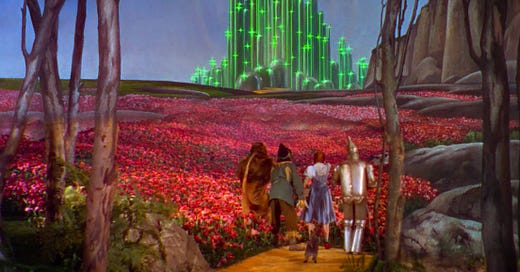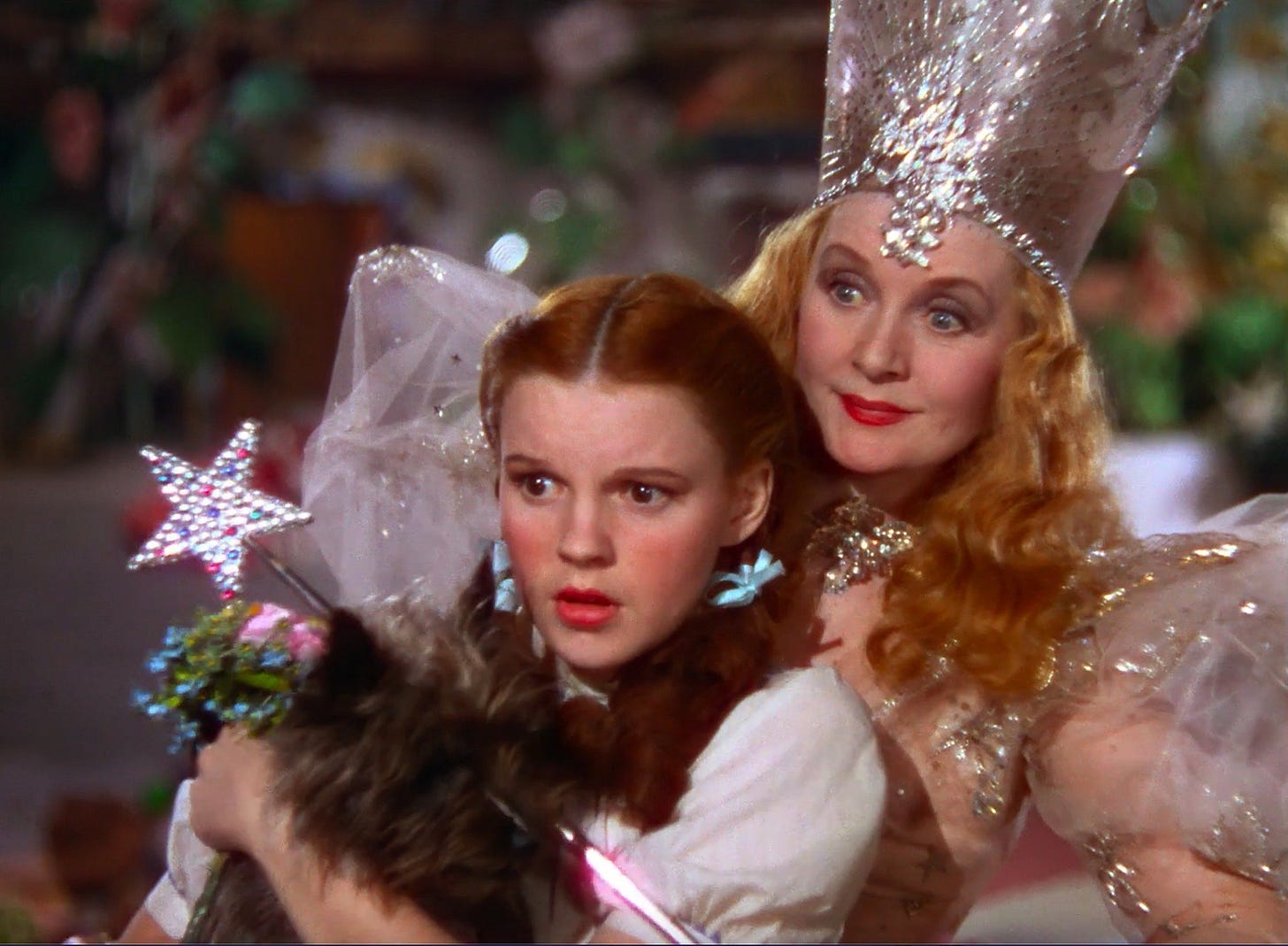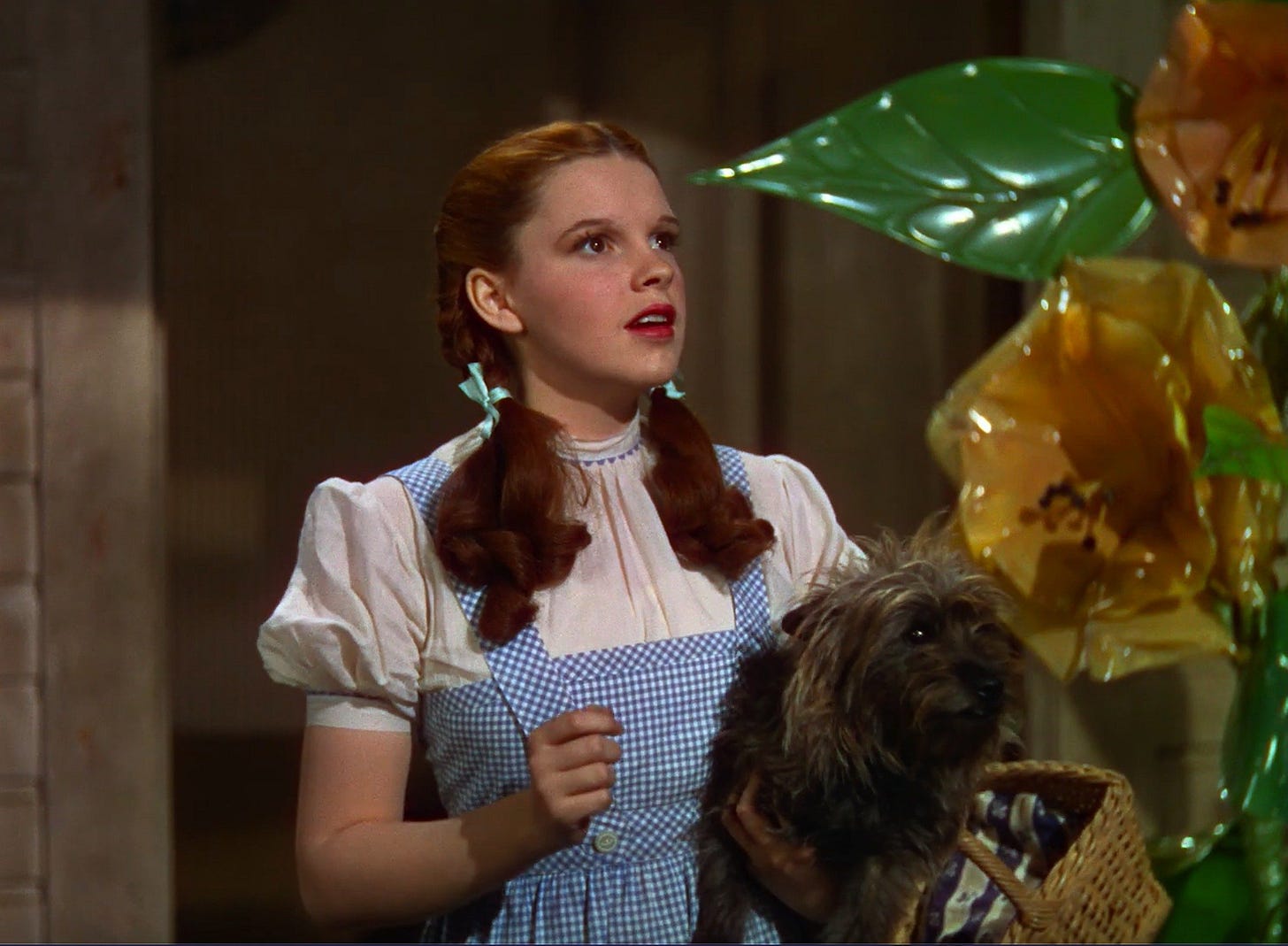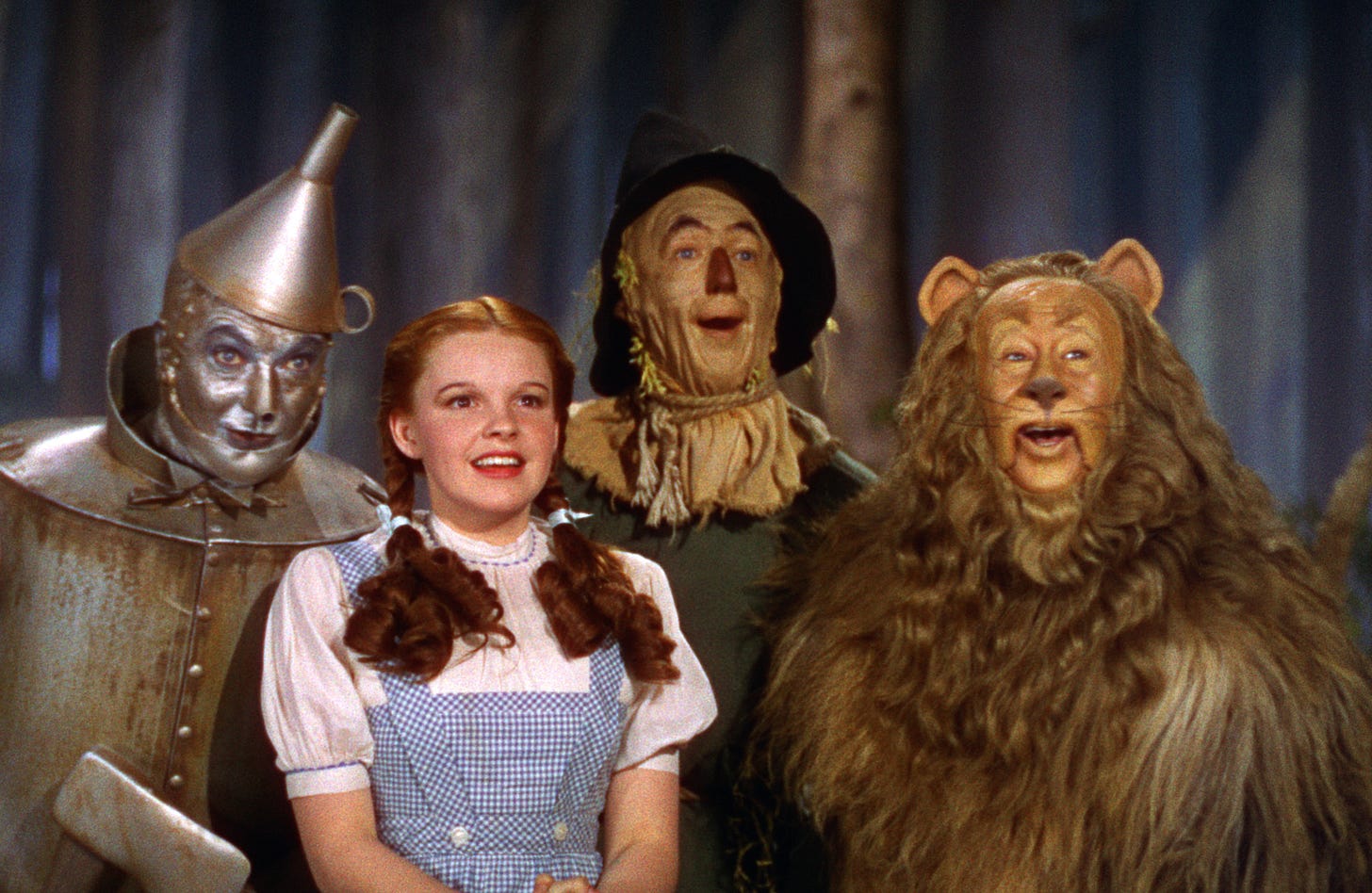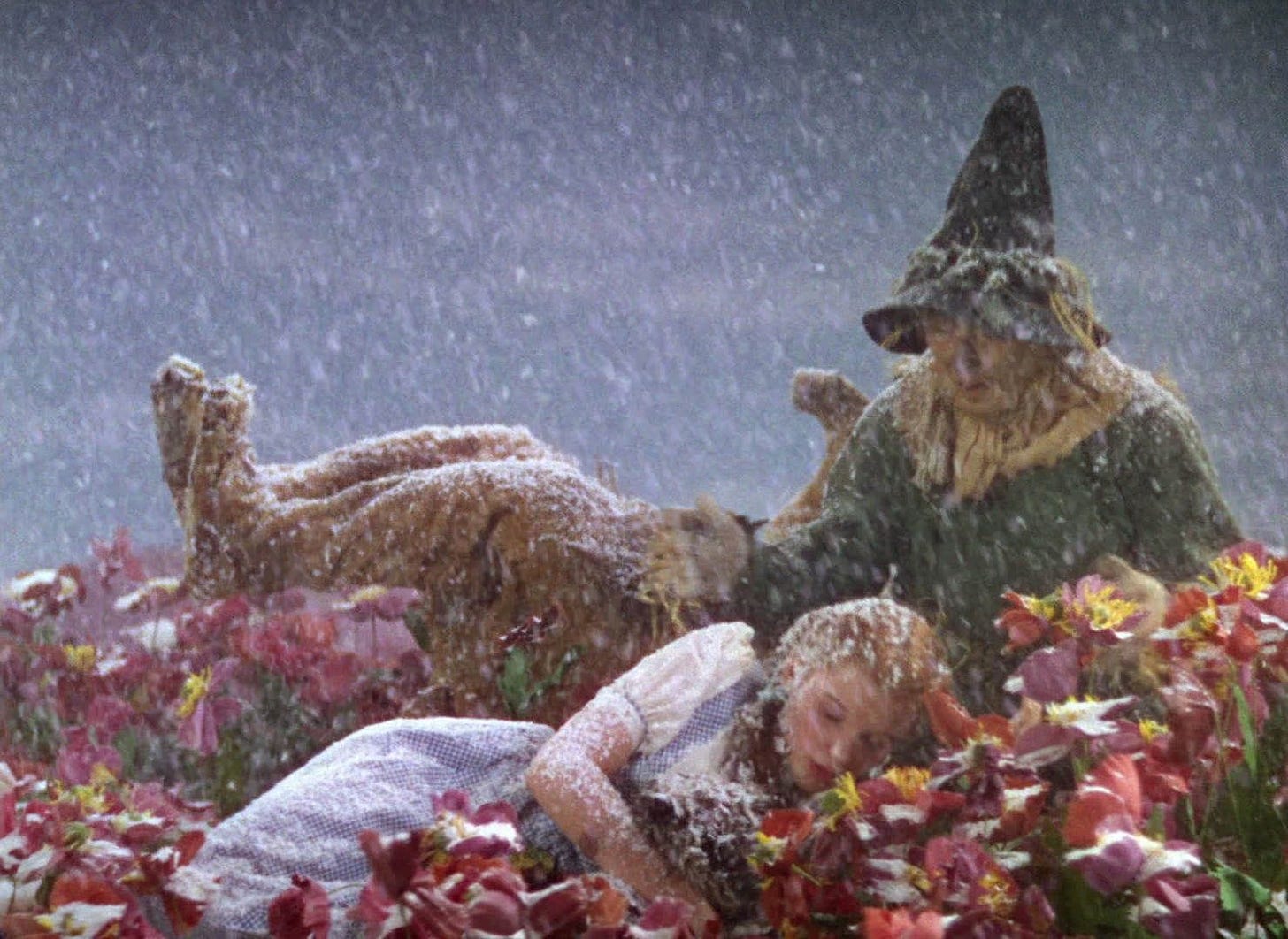The Cursed Filming of The Wizard of Oz
How a troubled production became an immortal icon of golden-age Hollywood.
To my English speaking readers: since my native language is Spanish, I apologise in advanced for any mistakes that you can find in the English version of this post. Thanks for your support! 😊
All film buffs enjoy behind-the-scenes anecdotes. The tougher the making of a project, the more intriguing the final work becomes. That’s why production diaries like Werner Herzog’s Conquest of the Useless (which recounts the epic filming of Fitzcarraldo) often become hits among cinephiles.
However, few productions have been as cursed as the 1939 classic The Wizard of Oz. With the film back in the spotlight thanks to the recent release of Wicked, let’s revisit the (many) challenges the production faced before it reached cinemas.
Based on the 1900 novel by L. Frank Baum, the film tells the (now iconic) story of Dorothy, whose Kansas home is swept away by a tornado and lands in the magical Land of Oz, accidentally crushing the Wicked Witch of the East. To find her way back home, Dorothy embarks on a journey to the Emerald City (where the powerful Wizard of Oz resides), making quirky friends along the way (the Good Witch of the North, the Tin Man, the Scarecrow, and the Cowardly Lion) and encountering some foes (the Wicked Witch of the West).
Following Disney’s success with Snow White, MGM decided to make a significant investment in this family-friendly project, allocating a staggering budget of $2.7 million (making it one of the most expensive films in history at the time). And it came with a host of setbacks.
A total of four directors helmed the production at various points: Richard Thorpe began filming but was dismissed after two weeks; George Cukor took over briefly but had to leave due to prior commitments directing Gone with the Wind; Victor Fleming stepped in and oversaw most of the shoot (ironically leaving before the end to replace Cukor on Gone with the Wind), and King Vidor handled the final days of filming.
For the role of Dorothy, MGM initially considered Shirley Temple but could not reach an agreement with the child star. After auditioning several candidates, they settled on Judy Garland, who was already under contract with MGM and had a better singing voice than Temple, despite concerns that she was too old (16 at the time). The sacrifices Garland endured during filming are legendary: she was made to wear a corset under her dress to conceal her adolescent figure, dental caps for a perfect smile, and even rubber discs on her nose to alter its shape. Years later, Garland revealed that she was also given medication to suppress her appetite, which caused frequent mood swings during filming, including uncontrollable giggling. She also endured harassment from the actors playing the Munchkins, who were reportedly often drunk on set.
The other actors didn’t have an easy time either. Initially, dancer Buddy Ebsen was cast as the Scarecrow but was reassigned to play the Tin Man after Ray Bolger expressed interest in the former role. Broadway comic Bert Lahr played the Cowardly Lion, and Margaret Hamilton took on the part of the Wicked Witch of the West.
The costumes, designed by the iconic Adrian, were stunning but presented challenges for the cast.
Early in production, Ebsen fell gravely ill from inhaling the aluminium dust used in his Tin Man makeup. He spent six weeks in hospital and was replaced by Jack Haley, who MGM borrowed from Fox. Haley’s costume allowed very little mobility, forcing him to lean against surfaces to rest between takes since sitting down was impossible.
Margaret Hamilton was also injured during filming. She suffered burns in the scene where her character disappears from Munchkinland in a cloud of smoke and fire. Later, her stunt double had a serious accident when the flying broomstick (designed to emit smoke) exploded. Moreover, the green makeup used for her skin tone contained a copper base, which was potentially toxic.
As for Bert Lahr, his elaborate costume, made from synthetic materials and real lion fur, weighed approximately 40 kilograms. The intense heat inside the suit, exacerbated by the studio lighting, and the liquid diet he was put on to avoid altering the mask caused him to fall ill as well—though he managed to complete filming.
The movie was shot in Technicolor (one of the first major productions to use this technique), gifting us with some of the most beautiful visuals in film history. The entire film was shot in-studio, with most of the sets consisting of full-scale paintings. The production design posed its own hazards, as asbestos (a highly toxic material) was commonly used for certain elements, such as the "snow" that the characters fall asleep in (actually asbestos powder).
Production design, including the sets, was overseen by Arnold Gillespie, who not only faced the challenges of filming in Technicolor but also had to create complex special effects for the movie. Despite receiving numerous awards during his career, Gillespie is best remembered for his tornado effect in this film.
Despite all these setbacks, The Wizard of Oz has become one of the greatest classics in cinema history. Its vivid Technicolor imagery remains etched in everyone’s memory, and Over the Rainbow, masterfully sung by Judy Garland at the film’s start (and almost cut for not being cheerful enough), is the second most-covered song in history after Happy Birthday.
One final curious fact: in the early scene where Dorothy meets Professor Marvel (who later turns out to be the Wizard of Oz), the actor wears a coat that the wardrobe department had found in a second-hand shop. When they went to shoot the scene, they discovered a label inside the coat indicating that it had been tailored for L. Frank Baum, the author of The Wizard of Oz. Despite the production’s many difficulties, the film was clearly meant to be. And we’re all lucky it came to fruition.


